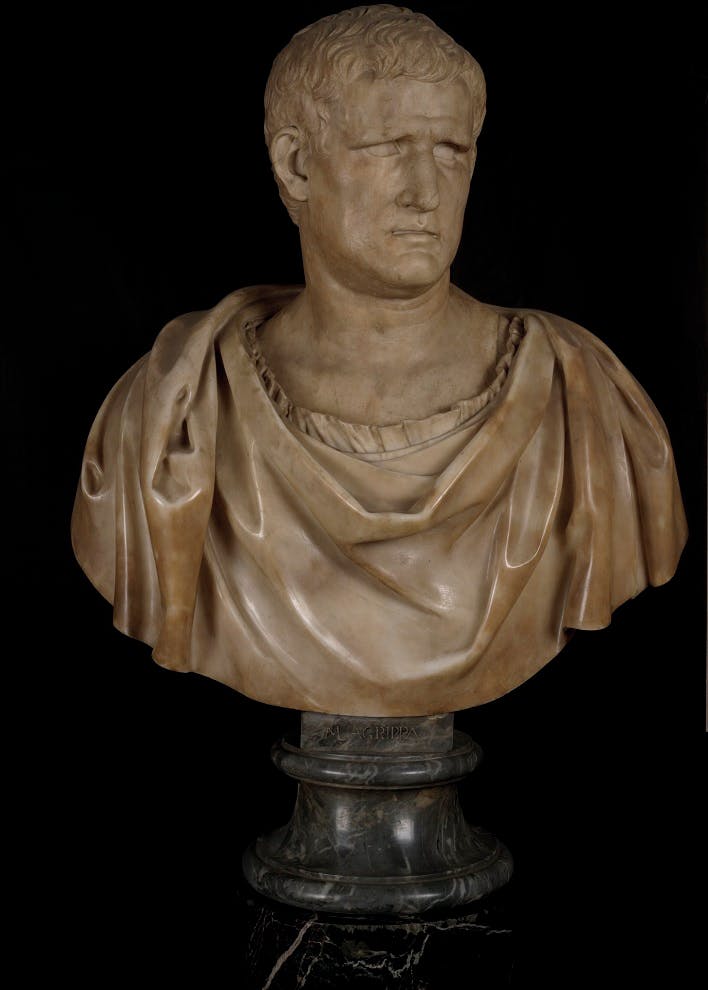Portrait of Agrippa
Roman art
The type of statue used for this portrait is known by numerous depictions on different supports (gems, cameos, statues and reliefs). The head, which is original, has been placed on a modern bust and has a markedly accentuated arched brow, which, with this character, contribute to the strong air of the character’s gaze. The model is the most typical used for portraits of Marcus Vipsanius Agrippa, the right hand and later, son-in-law of Rome’s first emperor, Augustus, whose daughter, Julia, he married. Agrippa was responsible for Octavian’s crushing naval victory at Actium (30 A.D.) against Anthony and Cleopatra, and he intended to leave his throne to the sons of Agrippa and Julia. The initial heirs were brothers Gaius and Lucius, and it was only after their deaths in 4 A.D. that Augustus decided to name Agrippa Postumus as his successor. The work in the Gallery became part of the Medici collection as a gift from Pope Pius IV to Lorenzo de’ Medici, who went to Rome in 1471, and it is one of the very few ancient marbles that can be traced back to the original core of the Medici family’s collection of antiquities.
3D model in collaboration with Indiana University.
Visit: http://www.digitalsculpture.org/florence/
